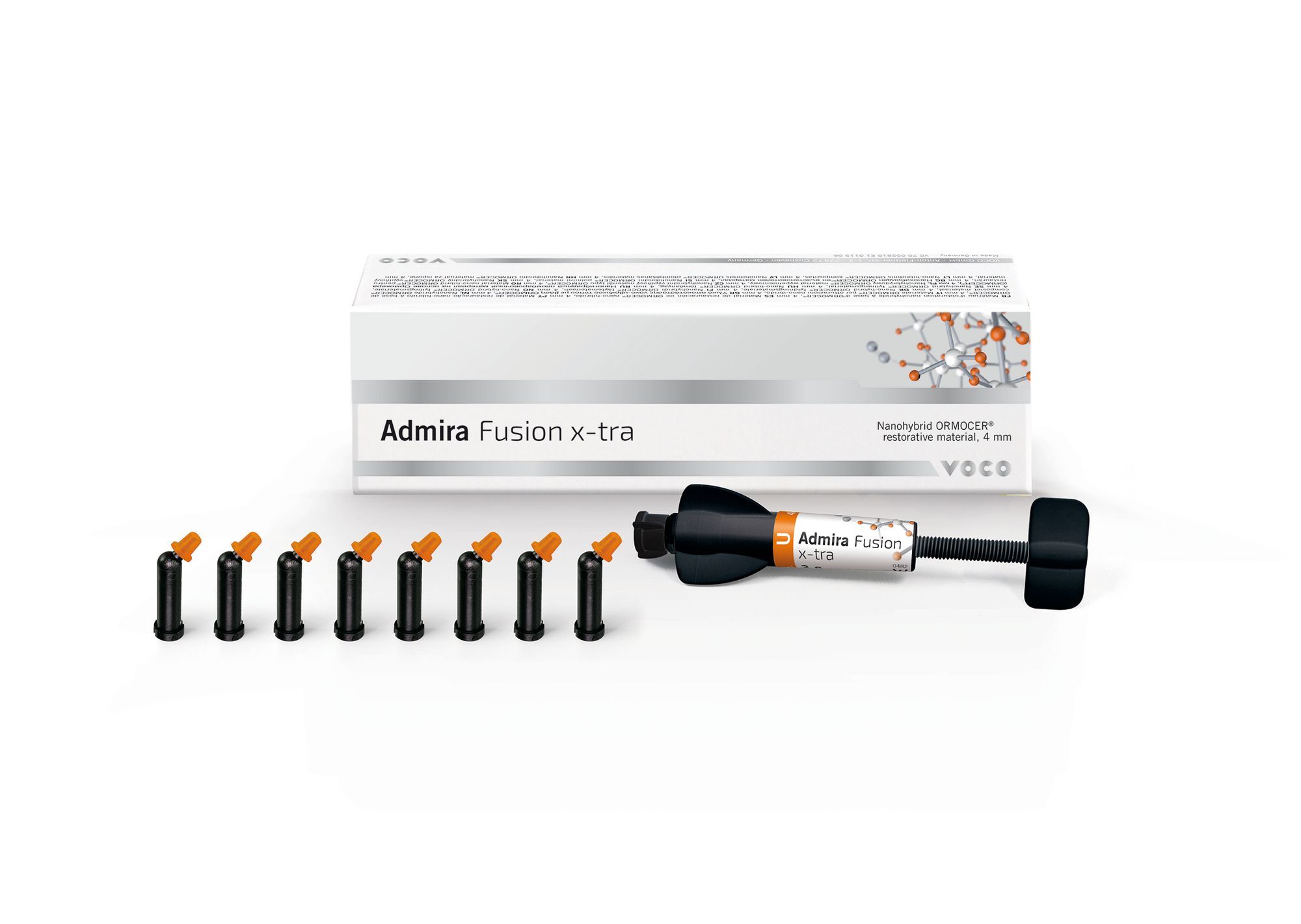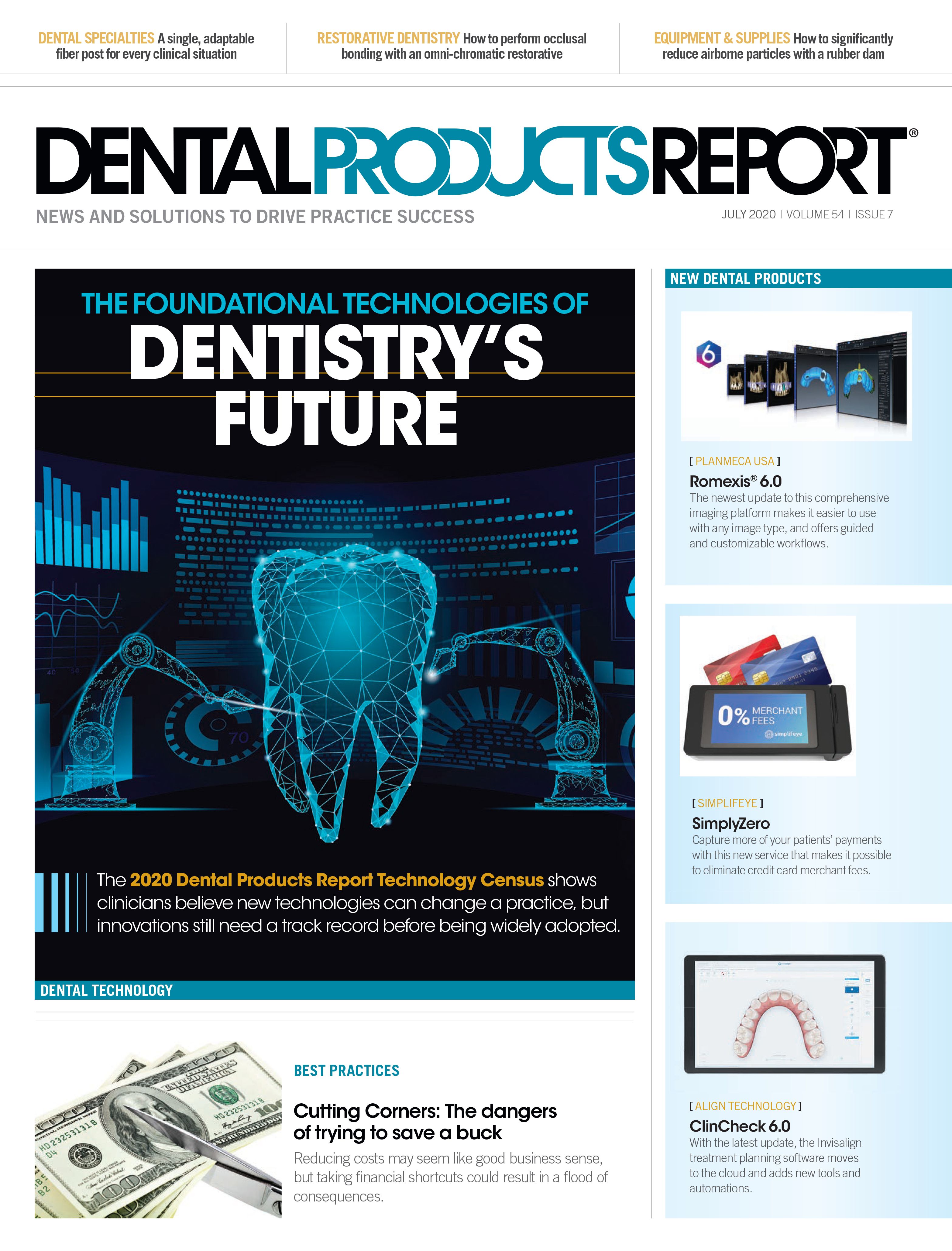Every year millions of dental composite restorations are placed that will eventually fail in 5 to 10 years. Many advancements have been made in these restorative materials to make them flow better, give them an increased depth of cure, and simplify their finishing and polishing.
Products are expected to be resistant to hydrolytic degradation, have improved biocompatibility, carioinhibition and microbial inhibition. These innovative new products are also expected to stand tough against the changes in pH in the oral cavity, bruxism issues, and preexisting dental restorations in the mouth that may not be in stable occlusion.
Attritional wear is caused by the tooth surfaces of the lower arch rubbing against the tooth surfaces of the upper arch. Wear can also be caused by abrasive toothpaste and chemical interaction, resulting in an asymmetrical wear pattern. Sleep disorders and other ailments creating the need for medications that can cause dry mouth can further aggravate the situation.
As teeth are worn down or age, their surface texture becomes increasingly smooth and shiny, causing the dentin to become more visible through thinner enamel. Additionally, older mercury-containing amalgam restorations that were restored with the GV Black retention and resistance form designs fail, leaving us with unsightly and leaky restorations that can be dangerous to a patient’s health.
Admira Fusion x-tra
- Single-shade omni-chromatic nano-ORMOCER restorative
- Only one omni-chromatic shade covers classic shade range
- 4 mm depth of cure allows bulk filling
- Highly stain resistant; easy to polish to a high gloss
888-658-2584 | VOCO America
During tooth development, secretory ameloblasts displace themselves outwards from the dentin-enamel junction (DEJ) in a direction opposite to the secretory face of their Tomes process, a 10 cell-thick group takes a gently sinusoidal course outward at a 45 to 55 degree angle to the adjacent group of cells.
Enamel reaches roughly 95% by weight hydroxyapatite, 3 to 4% protein and 1 to 2% water, and this composition yields the unique mechanical properties that enable enamel to last the lifetime of most individuals. So, this is the basis of biomimetic dentistry for us.
We want materials that have esthetics like enamel and dentin, mechanical efficacy, can transmit excessive loads, have the proprioception of healthy enamel, and will support a biofilm characteristic of healthy oral flora.
An evaluation of opposing contact facets must remain a high priority for a functional balance to be achieved and maintained. Thick enamel serves an important geometric function: When a stressor or load is applied, the thicker enamel becomes more compliant.
With all these unique properties, the bar is high for finding a restorative material that can compete with natural enamel and dentin. As the breakdown occurs and the enamel wears away or the dentin is cavitated, it is our goal to preserve what we can and rebuild it with materials that can maintain the integrity of the tooth. It is also known that the inner carious dentin can become remineralized by normal biologic processes following adhesive resin treatments so long as a sterile seal can be made around the restorative margins.
Use and Application of Futurabond U and Admira Fusion x-tra
With great regard to the C-factor—which is the ratio of the bonded surface area to the unbonded surface area—we build up the posterior teeth with great care not to create any unwanted stress that can cause a bond to fail. Conservative preparations with bevels in enamel that can be bonded with the Futurabond U—which is two separate liquids, one containing polyfunctional adhesive monomers, dimethacrylate, SiO2 nano particles, initiators and stabilizers and a second liquid containing ethanol, water, and DC catalyst. The bonding agent is self, selective or total-etch, it is light, self or dual-cure, and has bond strengths of more than 30 MPa to dentin and enamel. It has a fast and easy one-coat application, allowing me to apply, dry, and cure in 35 seconds.
Next, we apply the Admira Fusion x-tra nano-ORMOCER direct restorative, an all ceramic-based smart restorative. ORMOCERs are made up of organic fillers and inorganic co-polymers with a 3-dimensional cross-linking matrix based on silicon oxide.
The nano-hybrid technology is the other part of it. The nanoparticles (small round balls of glass the size of atoms, 20-60 nanometers) are so small the filler particles collectively seem to flow like a liquid even though individually they are a solid.
In composite or restorative materials, nano-particulate allows for a significant reduction of composite resin–and thus a reduction of monomers contained within the resin. The reduction of resin and increase of glass filler allows for enhanced properties that offer improved performance and longevity, better esthetics, easier handling, and other benefits.
Biocompatibility, Indications and Unique Properties
This direct restorative material, that offers a 4 mm depth of cure, does not contain classic monomers, so no BisGMA (BPA), TEGDMA, or UDMA. Thanks to the innovation of an ORMOCER matrix, this material, that was partially based upon ORMOCER (ORganically MOdified CERamic) technology, in which monomers are precured to reduce shrinkage, stands at a low 1.25% polymerization shrinkage, providing optimal marginal integrity.
Being that it is inert, the material is highly biocompatible, resistant to discoloration, has excellent handling, works with a simple, high-luster polishing procedure, and it offers high surface hardness, allowing for a long-lasting universal shade restoration with chameleon effects that mimic enamel and dentin.
The nano-hybrid particles allow for high filler content, edge strength, and surface hardness. Taking the best properties of nano-hybrid materials and the best properties of the ORMOCER technology, we create a nano-ORMOCER direct restorative material based purely on silicon oxide and completely free of classic monomers. The optimized size and shape of Admira Fusion x-tra’s nano particulate does not reflect or diffract the light. Instead, the light passes through, hits the surrounding tooth structure, and then comes back to the human eye influenced by the shaded tooth color surrounding the Admira Fusion x-tra restoration.
It is for this reason that Admira Fusion x-tra has the unique ability to match the entire shade range of human dentition with just one universal shade. In conjunction with its flow properties for deeper cavity preparations, this is an ideal and optimal solution for all your posterior restoratives.
The indications are many from class I to V restorations; base in class I and II cavities; reconstruction of traumatically damaged anteriors; faceting of discolored anteriors; correction of shape and shade for improved esthetic appearance; locking and splinting of loose anteriors; repairing veneers and small enamel defects’ extended fissure sealing; restoration of deciduous teeth; core buildups; and composite inlays.
The ISO-pak around each capsule allows for infection and humidity control because it provides airtight sealing. These properties, in conjunction with slow start polymerization and proper technique, all yield little to no post-operative sensitivity when using a self-etch adhesive on dentin, placement of a flowable composite (nano-ORMOCER) base, and the use of superior restorative products.
Case Study
A 30-year-old female with a history of bruxism and mild gingivitis presented to the office with a chief complaint of discomfort on a broken filling on the lower right side. Photography and thorough examination resulted in us determining she was also in need of orthodontic care; however, caries control was needed prior to starting any tooth movement.
Mepivacaine HCl3% (available from Henry Schein), our local anesthetic of choice, was injected locally to make the patient comfortable. After placement of a COLTENE rubber dam, the preparation was performed with a high speed handpiece from Dentsply Sirona Midwest.
Using sufficient water spray, the carious dentin was exposed, and conservative and sound removal of the amalgam restoration was performed under a high speed suction. Removal of the filling exposed underlying decay. Removal of the majority of the filling was done with coarse gold diamond burs from Brasseler USA and a #558 carbide bur (Figures 1-2).
A Bioclear disclosing solution from Bioclear Matrix Systems was brushed copiously onto the tooth and used to demark the existing unhealthy carious tooth structure. After a light water irrigation and air spray, a purple coloration was left behind demarking areas in need of further excavation. Additional underlying decay was removed with smaller round diamonds from Shofu Dental Corp., to allow for minimal tooth preparation and preservation of healthy tooth structure. Carious remnants were further removed and then a Microcopy mosquito bur was used to place a minor bevel on the enamel margin to increase surface area for bonding.
A gentle sandblast was done with the Bioclear system using the aluminum trioxide powder and a chlorhexidine irrigation was performed with a microbrush. An important part of our bonding protocol involves using a 2% chlorhexidine solution from Henry Schein on exposed dentin prior to phosphoric acid etching, to deactivate endogenous collagenase enzymes called matrix metalloproteinases (MMPs) and preserve the maximum bond strength. By deactivating the MMPs, a less pronounced water treeing affect can be observed, which means less degradation of resin-dentin bonds. Long-term water exposures are a factor known to promote bond degradation. The wettability of enamel is enhanced by etching it (see Figures 3-6).
Since we planned to use VOCO Futurabond U bonding agent, a quick 3-second etch was sufficient and only placed on the beveled enamel margin. The Futurabond U comes in a convenient SingleDose blister pack that is helpful in avoiding the problems of a traditional bonding agent that can evaporate and is constantly exposed to air, affecting and destroying its chemistry.
You simply squeeze the blister pack, which mixes the previously-separated liquids contained within, then pierce the small containment chamber with your application brush, and apply with the application brush intraorally which is then used to seal and bond. Two coats were applied, given 30 seconds to sit on the tooth structure and then gently air dried to remove excess, and light cured. An initial layer of Admira Fusion x-base flowable from VOCO is placed at the base of the preparation to remove irregularities and create a smooth base on which to build cusps. The flowable was gently agitated with an explorer to ensure removal of any air bubbles or voids (Figure 7).
Small amounts of Admira Fusion x-tra restorative are placed along each cusp to minimize the C-factor and create harmonious cusps. As you build the cusps, you will notice that this smart restorative has an affinity to the surrounding tooth structure. Unlike most composites that can slump, lose shape, or stick to instruments, I find that once placed, this restorative will not do any of those things.
Placement of the restorative was done with Cosmedent IPC instruments and brushes which were used to adapt the material to the margins and create a nice blend of the material and tooth structure.
Never plunge or push the material, opting instead for gentle nudges and brush strokes to manipulate the material. Prior to curing, a minimal amount of dark brown tint was placed on the occlusal surface to provide warmth and match the surrounding teeth for natural effects. Remember, with tints a little can go a long way, so consider blending it in with the Admira Fusion x-base flowable to dilute the color until you reach the desired result (Figures 8-11).
Finally, the Admira Fusion x-tra restorative was light cured to ensure a lasting bond, the Celalux 3 from VOCO was used to cure first from the buccal and lingual surfaces and then finally from the occlusal. An oxidizing gel was used to cover the restoration once more prior to final finishing and polishing. Stunning final results were achieved with a diamond polishing paste and velvet wheel from Shofu Dental. Due to the history of bruxing, an occlusal nightguard was fabricated for daily nighttime use (Figure 12).
Conclusion
Shade match, marginal seal, and high strength are necessary in all composite bonding. Using a material that can be a “one size fits all” solution is the choice to make when you want long-lasting composite, or in this case nano-ORMOCER restorations, with speed and efficiency whether in pediatric, adult, or geriatric dentistry.
It is not just the restorative material, but also the use of a strong self-etch bonding agent with a guaranteed chemical composition that helps ensure bacteria does not slip through the cracks to cause recurrent decay and failed restorations. I find that when I stick with the systems from VOCO, I can ensure good adhesion chemistry, decreased post-operative sensitivity, and bonding success.


